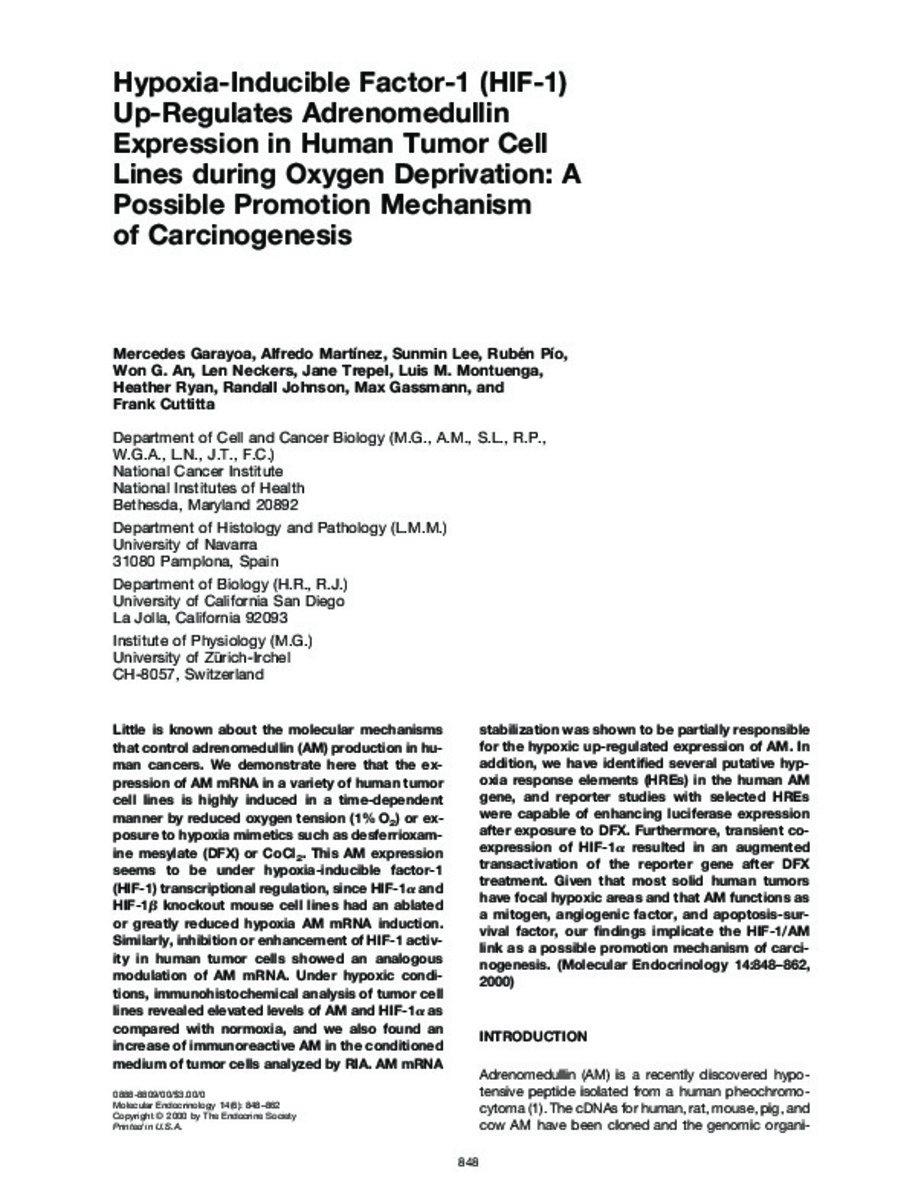Hypoxia-inducible factor-1 (HIF-1) up-regulates adrenomedullin expression in human tumor cell lines during oxygen deprivation: a possible promotion mechanism of carcinogenesis
Keywords:
Cell Hypoxia
DNA-Binding Proteins/pharmacology
Gene Expression Regulation, Neoplastic/drug effect
Neoplasms/metabolism
Nuclear Proteins/pharmacology
Peptides/genetics
Transcription Factors
Publisher:
Endocrine Society
Citation:
Garayoa M, Martinez A, Lee S, Pio R, An WG, Neckers L, et al. Hypoxia-inducible factor-1 (HIF-1) up-regulates adrenomedullin expression in human tumor cell lines during oxygen deprivation: a possible promotion mechanism of carcinogenesis. Mol Endocrinol 2000 Jun;14(6):848-862.
Statistics and impact
0 citas en

0 citas en

Items in Dadun are protected by copyright, with all rights reserved, unless otherwise indicated.










